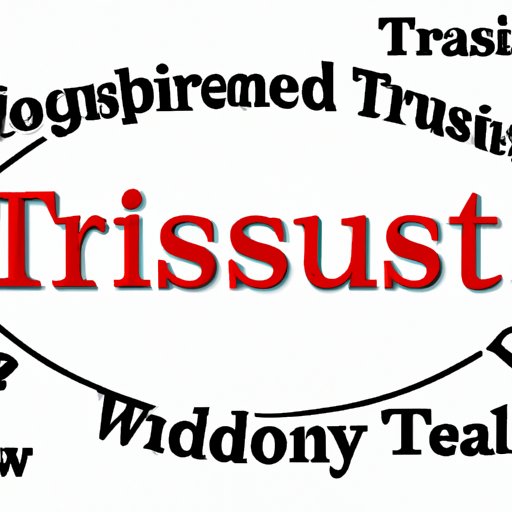
I. Introduction
Trusts are an essential tool for estate planning, providing a way for individuals to manage and distribute their assets after death. However, for beneficiaries trying to receive their inheritance, the process of obtaining funds from a trust can be complicated and confusing. In this article, we will unravel the mystery of trust distributions to beneficiaries, providing a step-by-step guide to receiving your rightful inheritance.
II. Unveiling the Mystery: Understanding the Process of Trust Distributions to Beneficiaries
A trust is a legal relationship in which one person, the grantor, transfers property to another person, the trustee, to hold for the benefit of a third person, the beneficiary. Trusts can be established for a variety of purposes, including providing for family members, charitable giving, and tax planning.
There are two main types of trusts: revocable and irrevocable trusts. Revocable trusts can be altered by the grantor and are often used as a method of avoiding probate. Irrevocable trusts, on the other hand, cannot be altered once established and are used for tax planning and asset protection.
The trustee’s primary role in a trust is to manage the assets according to the grantor’s wishes and distribute funds to beneficiaries as specified in the trust instrument. While the trustee has a fiduciary duty to act in the best interests of the beneficiaries, there are several reasons why trust distributions may be delayed, including pending lawsuits, disputes between beneficiaries, and administrative issues.
III. The Trustee’s Guide to Distributing Funds to Beneficiaries: Best Practices and Expectations
To ensure a smooth distribution process, the trustee must follow certain best practices and expectations when distributing funds to beneficiaries. First and foremost, the trustee must understand their responsibilities under the trust instrument and have a clear understanding of their fiduciary duty to the beneficiaries.
Communication with beneficiaries is also critical. The trustee must keep beneficiaries informed of the status of the trust and any delays in distributions. Additionally, the trustee must provide an accounting of the assets held in the trust, income received, and expenses paid.
The timeframe for trust distributions varies depending on the trust instrument and the assets held in the trust. However, the trustee must act in a reasonable and timely manner and distribute funds as specified in the trust instrument.
IV. Breaking Down the Steps: A Step-by-Step Guide to Receiving a Trust Distribution
If you are a beneficiary looking to receive a trust distribution, there are specific steps you must follow. First, you should request a trust distribution from the trustee. The trustee will then verify your identity and review the trust instrument to determine the assets available for distribution.
The next step is for the trustee to calculate the distribution amount based on the assets available for distribution and the terms of the trust instrument. Once the distribution amount is determined, the trustee will make the distribution to the beneficiary in accordance with the terms of the trust instrument.
V. Navigating the Legal Maze: How to Obtain Your Trust Inheritance
While the trustee has a responsibility to distribute funds to the beneficiaries, the legal requirements for trust distributions can be complex. It is essential to work with an attorney familiar with estate planning and trust administration to navigate the legal maze.
For example, the trustee must comply with the requirements of the state in which the trust is governed, including obtaining court approval for certain actions and filings. Additionally, beneficiaries who do not receive their rightful inheritance must navigate the legal system to recover their assets, including filing a lawsuit against the trustee or challenging the trust instrument in court.
VI. Demystifying Trust Distributions: What Beneficiaries Need to Know About Getting their Money
Beneficiaries have specific rights when it comes to receiving their inheritance from a trust. These include the right to receive timely distributions, the right to information about the assets held in the trust, and the right to take legal action if the trustee fails to act in their best interest.
It is important for beneficiaries to understand the trust instrument and avoid common pitfalls in trust distributions, such as failing to request a distribution or missing deadlines for challenging the trust instrument. Additionally, beneficiaries should consider tax implications when receiving a trust distribution and plan for the future.
VII. Conclusion
Obtaining your rightful inheritance from a trust can be a complicated process. However, by understanding the trustee’s role, navigating the legal maze, and taking control of your trust distributions, you can receive the assets to which you are entitled. If you are a beneficiary looking to obtain a trust distribution, we encourage you to work with an experienced attorney and take charge of your financial future.




